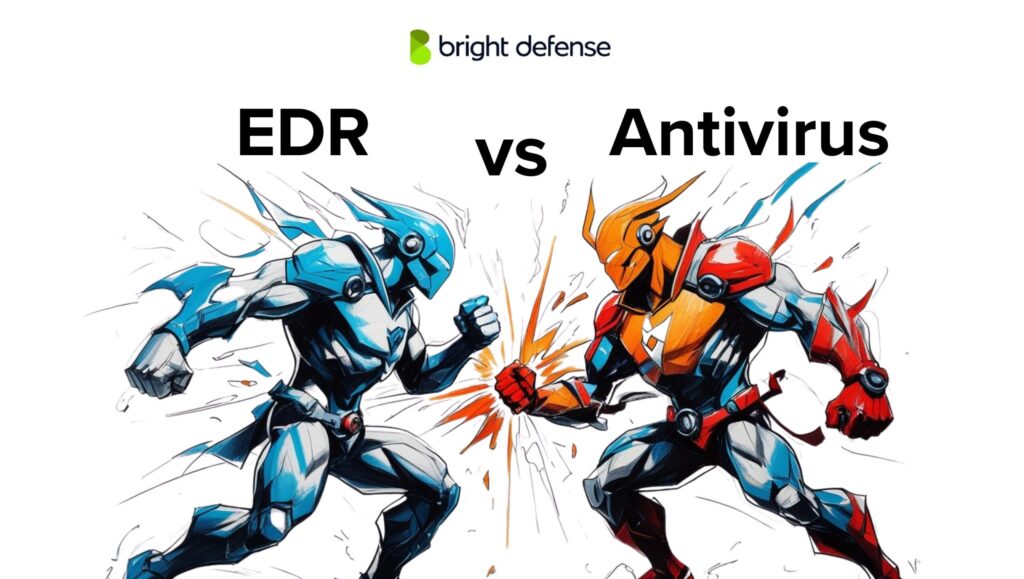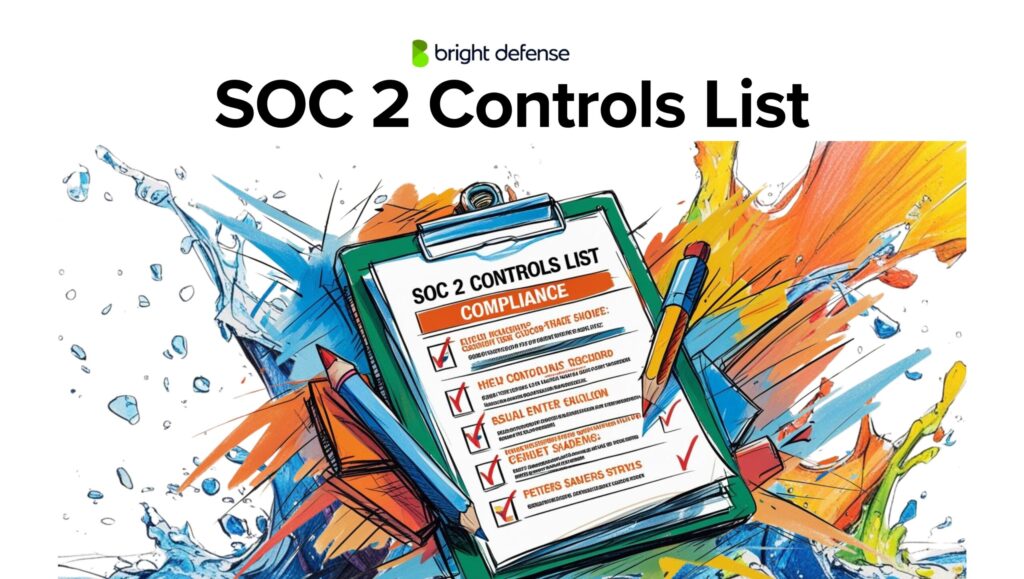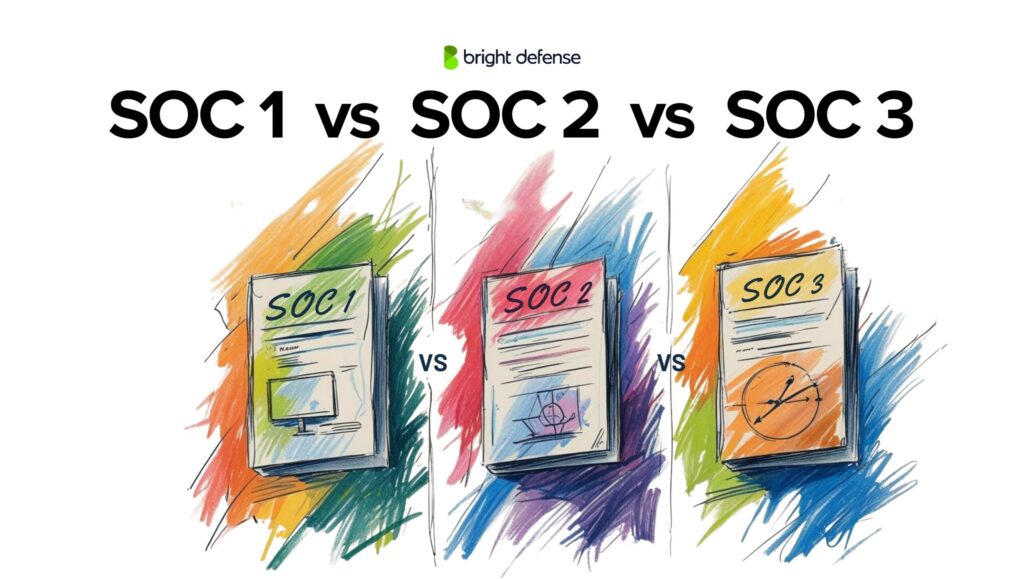
John Minnix - Compliance Strategist
June 28, 2025
SOC 2 vs. ISO 27001: Which Framework is Right for You?
Two significant frameworks often stand at the forefront of information security and compliance: SOC 2 and ISO 27001. Understanding the differences and similarities between these frameworks is crucial for organizations striving to enhance their data security and earn the trust of stakeholders. This extensive comparison explores the purposes, scopes, applications, and benefits of SOC 2 vs. ISO 27001, helping you make an informed choice for your organization’s security compliance needs.

Defining SOC 2 and ISO 27001
Before diving deeper into the comparison between SOC 2 and ISO 27001, it’s essential to understand the fundamental concepts of each framework. In this section, we’ll provide clear definitions and explanations for both SOC 2 and ISO 27001.
SOC 2
SOC 2, which stands for System and Organization Controls 2, is a framework developed by the American Institute of Certified Public Accountants (AICPA). It is primarily designed for service organizations, including cloud service providers, software-as-a-service (SaaS) companies, data centers, and other entities that handle customer data and provide services.
Purpose of SOC 2:
- SOC 2 focuses on assessing and reporting on the controls and processes related to customer data security, availability, processing integrity, confidentiality, and privacy.
- It aims to assure customers, stakeholders, and business partners that a service organization has implemented adequate security measures to protect their data.
Key Characteristics of SOC 2:
- Independent third-party auditors typically issue SOC 2 reports.
- There are two main types of SOC 2 reports: Type I and Type II. Type I reports describe the system and controls at a specific point in time, while Type II reports cover a period and assess the effectiveness of controls.
- SOC 2 criteria include five trust service principles: security, availability, processing integrity, confidentiality, and privacy. Service organizations can select which of these principles are relevant to their services.
ISO 27001
ISO 27001, on the other hand, is an international standard developed by the International Organization for Standardization (ISO). It provides a systematic and comprehensive approach to managing information security risks within organizations of all types and sizes, irrespective of whether they are service providers.
Purpose of ISO 27001:
- ISO 27001 focuses on establishing, implementing, maintaining, and continually improving Information Security Management Systems (ISMS).
- It is not limited to any specific industry or sector and applies to organizations across the globe.
Key Characteristics of ISO 27001:
- ISO 27001 requires organizations to identify and assess information security risks and implement controls to mitigate those risks.
- The standard comprises 114 security controls, categorized into 14 control sets, covering various information security aspects.
- ISO 27001 provides a structured framework for managing information security, emphasizing risk management and ongoing improvement.
In summary, service organizations tailor SOC 2 to focus on specific trust service principles related to customer data security. ISO 27001 is a global standard applicable to organizations of all types. It emphasizes the establishment of a comprehensive Information Security Management System (ISMS). Understanding these foundational concepts is essential for making an informed decision regarding the framework that best suits your organization’s compliance and security needs.

ISO 27001 vs. SOC 2
SOC 2 and ISO 27001 are both valuable frameworks for enhancing information security and achieving compliance. They have distinct differences in terms of purpose, scope, certification, and approach, however. In this section, we’ll outline the key differences between SOC 2 and ISO 27001 to help organizations make an informed choice:
Purpose and Scope
SOC 2
- Purpose: SOC 2 primarily targets service organizations, focusing on assessing controls and processes related to the security, availability, processing integrity, confidentiality, and privacy of customer data.
- Scope: It is tailored for organizations providing services, aiming to provide assurance to clients about data security and privacy.
ISO 27001
- Purpose: ISO 27001 systematically manages information security risks across the entire organization, not limited to service providers.
- Scope: It establishes, implements, maintains, and continually improves an Information Security Management System (ISMS) applicable to organizations of all types and sizes.

Framework Structure
SOC 2 Framework Structure:
SOC 2, developed by the American Institute of Certified Public Accountants (AICPA), is built upon the Trust Services Criteria (TSC), which encompasses five essential areas:
- Security: This area focuses on safeguarding systems, data, and information assets against unauthorized access, breaches, and incidents. It includes controls related to network security, data encryption, and access controls.
- Availability: Availability pertains to ensuring that systems and services are consistently accessible and operational when needed. Controls within this area address redundancy, disaster recovery, and uptime monitoring to maintain uninterrupted service.
- Processing Integrity: Processing integrity concentrates on the accuracy, completeness, and reliability of data processing. Here, controls ensure that data is processed correctly and promptly identify and correct errors or discrepancies.
- Confidentiality: Confidentiality safeguards sensitive data from unauthorized disclosure. It involves controls that restrict access to confidential information and prevent data leaks or unauthorized sharing.
- Privacy: Privacy concerns the protection of personal information and compliance with privacy regulations. Controls within this area focus on the collection, use, and disclosure of personal data in a manner consistent with privacy laws.
One notable aspect of SOC 2 is its adaptability. Organizations can customize these criteria to align precisely with the specific services they provide. This flexibility allows organizations to address the unique security and privacy needs of their clients and stakeholders, making SOC 2 a versatile choice for service providers operating in various industries.

ISO 27001 Framework Structure:
In contrast, ISO 27001 adopts a more structured approach to information security management. The standard comprises a set of 114 security controls organized into 14 control sets or domains, each addressing a specific aspect of information security:
- Information Security Policies: Establishing the framework for information security management within the organization.
- Organization of Information Security: Defining roles and responsibilities for information security and ensuring coordination across the organization.
- Human Resource Security: Addressing security aspects related to personnel, including hiring, training, and awareness.
- Asset Management: Identifying and managing information assets throughout their lifecycle.
- Access Control: Restricting access to information and systems to authorized users and ensuring appropriate access levels.
- Cryptography: Protecting information through encryption and other cryptographic methods.
- Physical and Environmental Security: Safeguarding physical premises and equipment that contain sensitive information.
- Operations Security: Ensuring secure day-to-day operations and processes.
- Communications Security: Securing network communications and data transfers.
- System Acquisition, Development, and Maintenance: Ensuring that organizations integrate security into developing and maintaining systems and applications.
- Supplier Relationships: Managing security risks associated with third-party suppliers and service providers.
- Information Security Incident Management: Establishing procedures for identifying, reporting, and responding to security incidents.
- Information Security Aspects of Business Continuity Management: Ensuring the availability of critical systems and information during disruptions.
- Compliance: Ensuring compliance with legal, regulatory, and contractual requirements.
While ISO 27001 allows some degree of customization, it emphasizes a structured and systematic approach to information security management. Organizations implementing ISO 27001 must consider all 114 security controls and adapt them to their specific context. This structured approach provides a comprehensive foundation for managing information security risks effectively.

Compliance vs. Certification
Organizations that adhere to SOC 2 standards undergo audits performed by qualified independent auditors. These audits are meticulous and thorough, evaluating whether the organization’s controls and practices align precisely with the criteria defined within the SOC 2 framework.
Successful completion of a SOC 2 audit results in the issuance of SOC 2 reports. These reports serve as a comprehensive record of the audit process, detailing the results and findings. They provide invaluable transparency and assurance to clients, partners, and stakeholders, helping them understand the organization’s commitment to data security and privacy.
ISO 27001 certification represents a formal recognition by accredited third-party certification bodies that an organization has successfully met the stringent requirements outlined in the standard. ISO 27001 takes a holistic approach to information security management.
Achieving ISO 27001 certification is a comprehensive process. Organizations seeking this certification must undergo a series of assessments and audits conducted by accredited certification bodies. These audits rigorously evaluate whether the organization has effectively implemented the necessary controls and practices to ensure robust information security.
Geographic Focus
SOC 2 is predominantly used in North America, especially in the United States, due to its robust framework for assessing and reporting on customer data security, availability, processing integrity, confidentiality, and privacy. This compliance standard is highly favored by service providers seeking to demonstrate their commitment to stringent security practices to clients and stakeholders within the region.
Furthermore, SOC 2 has also gained significant recognition in Canada. One contributing factor to its adoption in Canada is the endorsement of SOC 2 by CPA Canada. This endorsement signifies that SOC 2 aligns well with the principles and standards upheld by CPA Canada, making it a valuable choice for Canadian organizations aiming to showcase their dedication to data security and privacy.
ISO 27001 is a globally recognized Information Security Management Systems (ISMS) standard, offering a comprehensive framework that transcends geographical boundaries. It is not bound by regional or industry-specific constraints, making it adaptable to the diverse needs of organizations worldwide. This flexibility allows organizations to tailor their ISMS to their unique business processes, risk profiles, and regulatory requirements while adhering to globally acknowledged best practices. The universal appeal makes it an ideal choice for organizations of all sizes and types, regardless of location or industry.
Flexibility
SOC 2 allows organizations to customize controls and criteria to align precisely with their services. This means that an organization can select and implement controls that are directly relevant to the security, availability, processing integrity, confidentiality, and privacy of customer data within their specific service offering. For example, a cloud hosting provider may emphasize different controls compared to a data analytics company, and SOC 2 accommodates these variations.This adaptability makes it suitable for various service types, accommodating diverse security and privacy demands.
While ISO 27001 is a highly regarded information security management standard, people generally consider it less flexible than SOC 2. This distinction arises from the inherent nature of ISO 27001 as a comprehensive and structured framework for managing information security.
ISO 27001 promotes a highly structured approach to security management. It requires organizations to assess and implement all 114 controls, ensuring comprehensive coverage of information security risks. This structured approach is advantageous in that it leaves little room for gaps in security coverage.

Other Compliance Frameworks to Consider
While organizations may consider several other frameworks, depending on their specific industry, regulatory requirements, and objectives, ISO 27001 and SOC 2 are two of the most widely recognized compliance frameworks for information security and data protection. Here, we briefly touch on some of these alternative compliance frameworks:
NIST Cybersecurity Framework
Purpose: Organizations in the United States widely adopt the National Institute of Standards and Technology (NIST) Cybersecurity Framework. It offers guidelines and best practices for managing and reducing cybersecurity risk.
Scope: The framework focuses on five core functions: Identify, Protect, Detect, Respond, and Recover. It helps organizations align their cybersecurity efforts with business goals and manage risk effectively.
GDPR (General Data Protection Regulation)
Purpose: The General Data Protection Regulation (GDPR) is a European Union regulation that governs data protection and privacy for individuals within the EU. It also addresses the export of personal data outside the EU and EEA areas.
Scope: GDPR requires organizations to implement stringent data protection measures, including data breach notification, data subject rights, and privacy by design and default. It applies to organizations that process personal data of EU residents, regardless of the organization’s location.
HIPAA (Health Insurance Portability and Accountability Act)
Purpose: The Health Insurance Portability and Accountability Act (HIPAA) is a U.S. federal law that sets standards for protecting sensitive patient health information, known as protected health information (PHI).
Scope: HIPAA applies to healthcare providers, health plans, and healthcare clearinghouses (covered entities) and business associates. Compliance involves implementing safeguards to protect PHI and meeting privacy, security, and breach notification requirements.

PCI DSS (Payment Card Industry Data Security Standard)
Purpose: The Payment Card Industry Data Security Standard (PCI DSS) comprises a set of security standards designed to ensure that all companies that accept, process, store, or transmit credit card information maintain a secure environment.
Scope: PCI DSS applies to organizations involved in payment card transactions. Compliance involves implementing specific security controls to protect cardholder data, including network security, access controls, and encryption.
FedRAMP (Federal Risk and Authorization Management Program)
Purpose: FedRAMP is a U.S. government-wide program that standardizes the security assessment, authorization, and continuous monitoring process for cloud products and services used by federal agencies.
Scope: FedRAMP applies to cloud service providers (CSPs) seeking authorization to provide cloud services to federal government agencies. It ensures that cloud solutions meet rigorous security standards.
CSA STAR (Cloud Security Alliance Security Trust Assurance and Risk)
Purpose: The Cloud Security Alliance (CSA) STAR program provides a framework for cloud service providers to document their security practices and for customers to assess the security of cloud services.
Scope: STAR Certification allows cloud service providers to demonstrate their security posture and compliance with industry best practices. Customers can use the CSA STAR registry to assess the security of cloud services they are considering.
These are just a few compliance frameworks that organizations may consider, depending on their specific needs and regulatory requirements. The choice of a compliance framework should align with an organization’s industry, geographic location, and the nature of the data it handles, ensuring that it meets the necessary security and privacy standards.

Conclusion
Both SOC 2 and ISO 27001 play vital roles in enhancing information security and compliance for organizations. Your choice should align with your organization’s objectives, industry, and geographic reach. Whether you opt for the flexibility of SOC 2 or the international recognition of ISO 27001, your commitment to data security and compliance will strengthen your trust with clients, partners, and stakeholders, ultimately contributing to your organization’s success in a data-driven world.
Bright Defense Delivers SOC 2 and ISO 27001 Solutions
If you are looking to achieve compliance with ISO 27001 and SOC 2, Bright Defense can help. Our continuous compliance monthly engagement model delivers a robust cybersecurity program that meets frameworks including ISO 27001, SOC 2, HIPAA, and CMMC. Once compliance is achieved, we enhance your security controls to keep up with the evolving threat landscape. Our service includes a compliance automation platform to increase efficiency and lower the cost of compliance.
In addition to continuous compliance services, we offer security assessments, vCISO services, managed security awareness training, MFA, and more. Get started on your compliance journey today with Bright Defense!

Frequently Asked Questions (FAQ)
What distinguishes ISO 27001 from SOC 2?
ISO 27001 and SOC 2 differ primarily in their scope and purpose. ISO 27001 is a comprehensive international standard applicable to organizations of all sizes and types, focusing on information security management. In contrast, SOC 2 is specific to service organizations and concentrates on controls relevant to the security, availability, processing integrity, confidentiality, and privacy of customer data.
Do ISO 27001 and SOC 2 both prioritize the protection of customer data?
Absolutely. Both ISO 27001 and SOC 2 are designed to ensure organizations protect customer data. These frameworks provide a structured approach for organizations to implement controls and safeguards that guarantee the security and privacy of sensitive customer information.
How does the certification process for ISO 27001 and SOC 2 differ?
The certification process varies between ISO 27001 and SOC 2:
- ISO 27001: Organizations seeking ISO 27001 certification undergo audits conducted by accredited certification bodies. Successful assessment results in the organization receiving ISO 27001 certification, demonstrating a high commitment to information security management.
- SOC 2: SOC 2 operates as a compliance framework rather than a certification. Organizations undergo audits of controls relevant to customer data security. The result is an attestation report, not formal certification, that provides transparency and assurance to customers and stakeholders.
What are internal controls within these frameworks?
Internal controls refer to the policies, procedures, and safeguards implemented within an organization to manage risks, ensure compliance, and achieve security objectives. Both ISO 27001 and SOC 2 require organizations to establish and maintain effective internal controls as part of their compliance efforts.
How do ISO 27001 and SOC 2 address information security management?
ISO 27001 offers a comprehensive Information Security Management System (ISMS) that covers all aspects of information security within an organization. In contrast, SOC 2 focuses on specific trust service principles related to customer data security, making it more limited in scope and tailored to service organizations.
What is the significance of information security risk in compliance with these standards?
Both ISO 27001 and SOC 2 place great importance on identifying, assessing, and managing information security risks. Organizations must conduct risk assessments and implement controls to mitigate identified risks. This process is fundamental to ensuring compliance and safeguarding sensitive information.
What does the compliance process entail for these frameworks?
The compliance process for both ISO 27001 and SOC 2 involves several key steps, including defining security objectives, conducting a gap analysis, implementing controls, documenting policies and procedures, and preparing for an external audit. The specific steps may vary based on the chosen framework.
What is the role of an external audit in ISO 27001 and SOC 2 compliance?
An external audit is critical to both ISO 27001 and SOC 2 compliance. It is conducted by an independent auditor or a licensed CPA firm to assess an organization’s adherence to the selected framework’s requirements. The audit evaluates the effectiveness of controls and results in an attestation report that provides transparency and assurance to stakeholders.
Can organizations of various sizes and industries use these frameworks?
Yes, both ISO 27001 and SOC 2 are adaptable and can be used by organizations of different sizes and industries. While ISO 27001 is not industry-specific, it provides a comprehensive approach suitable for various organizations. SOC 2, on the other hand, is often favored by service organizations, but it can also be applied to various industries.
Is there a significant overlap between the organizational controls in ISO 27001 and SOC 2?
While there is some overlap in controls, particularly regarding information security best practices, ISO 27001 and SOC 2 have different scopes. SOC 2 focuses on controls relevant to customer data security, whereas ISO 27001 encompasses a broader spectrum of information security controls. Organizations should consider their specific compliance needs and objectives when choosing between these frameworks.
Get In Touch



